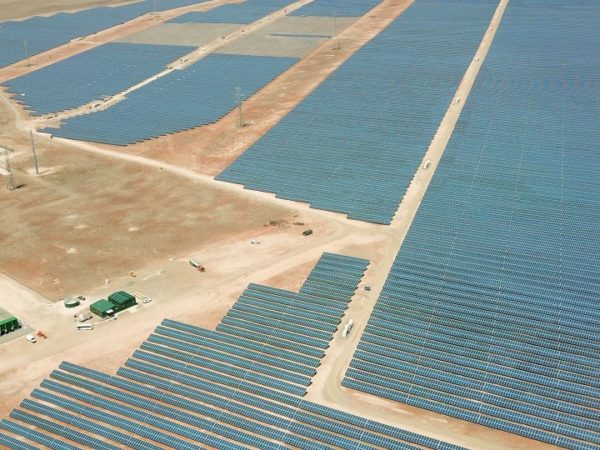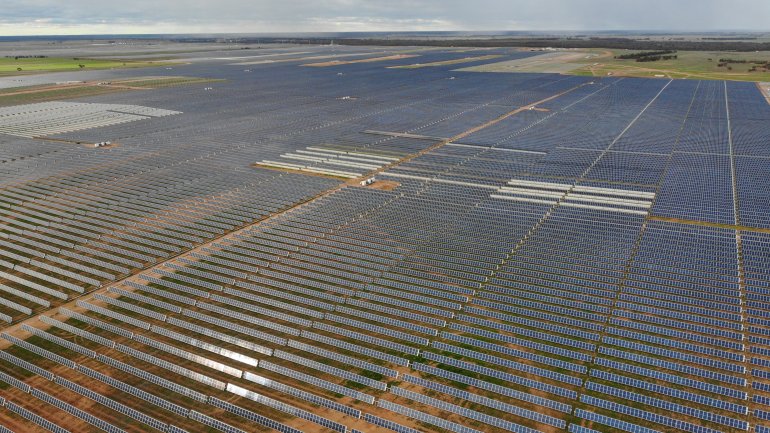JinkoSolar ended 2020 on a high, claiming to have more than one-third of Australia’s utility-scale solar generation to its name, and heralding that it would soon supply 1 GW of the nation’s sun-powered renewable energy when Sunraysia, Glenrowan, Jemalong and Batchelor solar farms come online in the months ahead.
“According to the data available on Australia National Electricity Market Dashboard, Google Data Studio,” the company said in a release, JinkoSolar modules deployed in large-scale solar projects are currently generating “almost 550 MWac” of a combined 1.5 GW solar-only (not including hybrid plants) output.
“We are very proud,” said Anita Li, General Manager of JinkoSolar for the Asia Pacific region. “This achievement validates our efforts and the customer recognition from the market means a lot to us.”
One of the world’s biggest solar module manufacturers, JinkoSolar Australia last year signed a one year $37 million line-of-credit agreement with National Australia Bank (NAB), to enable expansion of its local business and supplement its working capital.
“Our teams have been actively seeking new opportunities to contribute to the local electrical power system,” Li said in late December.
A brief history…
The 20 MW Royalla Solar Farm on the outskirts of Canberra was one of JinkoSolar’s first Australian projects, developed and commissioned by Fotowatio Renewable Ventures in 2014.
In the first half of 2019, 390,000 JinkoSolar Cheetah 290-300Wp 120 half-cell monocrystalline panels were commissioned at the 95 MW Tailem Bend Solar Farm, in what was only the second utility-scale solar project in South Australia.

Image: Vena Energy
And recently, the company supplied one of Australia’s largest solar projects to date, the 255 MW Sunraysia Solar Farm, which has some 750,000 solar modules installed across 10 square kilometres of south-west New South Wales.
Sunraysia suffered long delays in commissioning, due in large part to gridlock caused by a mass of solar projects seeking to connect to the National Electricity Market in that transmission-challenged region. The hold ups inflicted substantial losses on UK-based infrastructure developer and majority owner of Sunraysia, John Laing, but the project is now partially generating — its website shows it to be 39% energised — with full output expected to be achieved this year.
Infrastructure in the works
Other projects rolling off JinkoSolar’s high-tech production lines (which were forecast to have a module output capacity of 24 GW by end 2020), include the 140 MW Glenrowan West Solar Farm outside Wangaratta in Victoria; the 50 MW Jemalong Solar Farm, near Forbes in NSW; and Eni Australia’s 12.5 MW Batchelor Solar Farm in the Northern Territory.
Having signed up in 2019 to the Climate Group’s RE100 initiative (leading companies committed to running their operations 100% on renewable energy) and EP100 initiative (companies committed to producing more with less energy), JinkoSolar last year released its own “roadmap” to becoming 100% renewable powered by 2025.
The roadmap included accelerating R&D into new and recycled, lighter material alternatives in its product designs; optimising production processes to save energy; and investing more in onsite solar generation and battery energy storage at its nine globally dispersed manufacturing facilities.
As part of JinkoSolar’s overall strategy, Li said the company would “continue to provide innovative technology-based products and optimised operation to push the development of renewable development in Australia”.
This content is protected by copyright and may not be reused. If you want to cooperate with us and would like to reuse some of our content, please contact: editors@pv-magazine.com.









1 comment
By submitting this form you agree to pv magazine using your data for the purposes of publishing your comment.
Your personal data will only be disclosed or otherwise transmitted to third parties for the purposes of spam filtering or if this is necessary for technical maintenance of the website. Any other transfer to third parties will not take place unless this is justified on the basis of applicable data protection regulations or if pv magazine is legally obliged to do so.
You may revoke this consent at any time with effect for the future, in which case your personal data will be deleted immediately. Otherwise, your data will be deleted if pv magazine has processed your request or the purpose of data storage is fulfilled.
Further information on data privacy can be found in our Data Protection Policy.